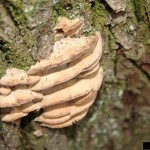When we think of the lush greenery that adorns our urban landscape in St. Louis, we often picture...
The Buzz of Cicadas: Effects on Missouri Trees in 2024
As the summer of 2024 unfolds, the buzzing symphony of cicadas fills the air in Missouri, marking the emergence of these fascinating insects. With their periodic appearances, cicadas bring both wonder and concern, especially when it comes to their effects on the trees of the region. In this blog post, we will delve into the impacts of cicadas we're seeing on Missouri's trees so far this year.
Cicada Emergence:
Every 13 or 17 years, depending on the species, cicadas emerge from the ground en masse in Missouri. This emergence is a spectacle to behold, with countless cicadas blanketing trees and surfaces as they transition from nymphs to adult insects. The sheer numbers of cicadas--not to mention the noise--can be overwhelming, raising questions about their impact on the local ecosystem.
Feeding Habits:
During their nymph stage underground, cicadas feed on tree roots, which can potentially harm young or newly planted trees. While this feeding activity may weaken the trees, established and healthy trees are generally able to withstand this pressure and recover over time. The resilience of mature trees plays a crucial role in mitigating the effects of cicadas on Missouri's forests.
Egg-Laying and Flagging:
One of the most visible impacts of cicadas on trees is the egg-laying behavior of female cicadas. Using their ovipositors, female cicadas create slits in tree branches to deposit their eggs. This process can weaken the branches, leading to a condition known as "flagging," where affected branches may die off. You may be noticing this recently, with tips of some tree branches turning brown while the rest of the tree may look fine. While this flagging can be concerning, it is often a temporary phenomenon that does not cause lasting harm to healthy trees.
Tree Resilience:
Trees in Missouri have evolved various defense mechanisms to cope with cicada infestations. Some tree species produce new growth to replace damaged branches, while others may redirect resources to strengthen their overall resilience. These adaptations highlight the intricate relationship between cicadas and trees in the region.
Ecological Benefits:
Despite the challenges they may pose, cicadas also bring ecological benefits to the ecosystem. Their emergence provides a crucial food source for predators such as birds, mammals, and insects, contributing to the biodiversity of Missouri's forests. Additionally, cicadas help aerate the soil with their burrowing activities, promoting overall soil health.
In conclusion, the effects of cicadas on trees in Missouri so far this year showcase the intricate dynamics of nature's interactions. While cicadas can cause temporary damage to trees, the ecosystem as a whole has mechanisms in place to adapt and thrive. As we witness the buzzing presence of cicadas in 2024, let us marvel at the resilience of Missouri's trees and the delicate balance of nature at work.
St. Louis Tree Pros
314-312-1331
info@stltreepros.com



